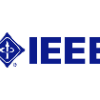new generation of Wireless Local Area Networks (WLANs) will make its appearance in the market in the forthcoming years based on the amendments to the IEEE 802.11 standards that have recently been approved or are under development. Examples of the most expected ones are IEEE 802.11aa (Robust Audio Video Transport Streaming), IEEE 802.11ac (Very-high throughput at < 6 GHz), IEEE 802.11af (TV White Spaces) and IEEE 802.11ah (Machine-to-Machine communications) specifications. The aim of this survey is to provide a comprehensive overview of these novel technical features and the related open technical challenges that will drive the future WLAN evolution. In contrast to other IEEE 802.11 surveys, this is a use case oriented study. Specifically, we first describe the three key scenarios in which next-generation WLANs will have to operate. We then review the most relevant amendments for each of these use cases focusing on the additional functionalities and the new technologies they include, such as multi-user MIMO techniques, groupcast communications, dynamic channel bonding, spectrum databases and channel sensing, enhanced power saving mechanisms and efficient small data transmissions. We also discuss the related work to highlight the key issues that must still be addressed. Finally, we review emerging trends that can influence the design of future WLANs, with special focus on software-defined MACs and the internet-working with cellular systems.
翻译:无线局域网(WLAN)的新一代无线局域网(WLANs)将根据最近批准或正在开发的IEE 802.11标准修正案,在未来几年中在市场上出现。最预期的标准有:IEEE 802.11aa(Robust 音频视频传输流)、IEE EE 802.11aaa(Robust 音频视频传输流)、IEEE 802.11ac(6 GHz高传输量)、IEEE 802.11af(TVWhitespace)和IEE EE 802.11ah(Machine-Machine通信)的规格。这次调查的目的是全面概述这些新的技术特点和相关的公开技术挑战,推动未来的WLAN的演变。与其他IEEEEE 802.11调查不同,这是一次以案例研究为导向的研究。我们首先描述了下一代局域网将必须操作的三种关键情景。我们随后会审查这些案例中最相关的修正内容,重点是额外的功能和新技术,例如多用户MIMO技术、集团化通信和网络传送系统,最后必须讨论动态数据传输系统。我们最后讨论的磁带关键路路段域域域域域域域域网。




